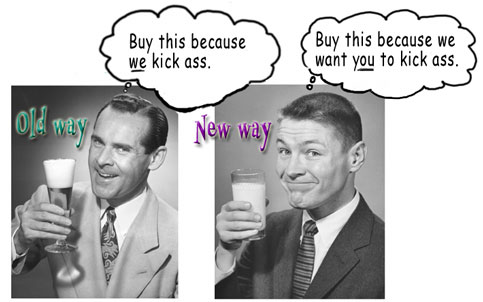It's Wednesday in Pittsburgh, and the information-laden NAMP Conference is still fresh in my mind. I have been pondering the challenge of separating these closely-connected insights, and will do my best to craft them into individual blog entries. I will start here with a quick overview of NAMP 2009 themes, and then delve into how these pervasive truths can be utilized in your emails, in your social media interactions, on your website, and finally, as we work through broader ways to connect beyond our own organizations' networks.
David Court's keynote emphasized that "Content is King" while the "Friendship 2.0" message "access is more important than content," highlighted the power of an organization's online content when controlled, in part, by its audience. Closely related was the undisputed tenet "Everybody wants to be an insider," Rich Mintz's much-tweeted quotation from Saturday's plenary lunch.
I believe that achieving this goal is one of the great strengths of social media well-used, a stance echoed in many of the sessions I attended. A social media strategy (as we have discussed in this blog and webinars) cannot be overemphasized--by establishing a place to start and a reason for so doing, you open up the possibility of experimentation, measuring success and failure, and cultivating a strong organizational identity and relationship with your "posse" (the term that Jeffrey Inscho of the Mattress Factory uses to designate online followers---without relegating them to being beneath and apart from the organization). The implications of embracing your audience and bringing them into the fold are far-reaching, and should color the consideration given to content, presentation, and accessibility. Is your organization asking for feedback and really listening, or simply proclaiming without engaging? Are you perceived as real and authentic, or dictatorial and closely controlling of the information and conversations being had about you? Are you afraid to hear what is really being said, and if so, are you ignoring critical feedback that could alter and improve programming?
Before my post on email marketing, I want to mention a couple of basic guidelines that came up time and again at the conference and which apply across the board.
- Experimenting and failing (within the strategy your organization has defined) is better than not experimenting and going unnoticed. Increasingly, people's decisions are made in a split second based on what is in front of them, and you want to be a contender for their attention.
- Testing, and taking note of what is and is not working (Haeben Kim of CAMT attended a session on ROI that she may guest-blog about in the future) will improve your organization's social media efficiency.
- Authenticity is crucial--you are selling an experience, not just "art," and remembering who you are and who you serve will help you captivate your audience early and often.
- Including your audience in the discussion is far more effective than talking at them. Yes, this means that you open up the channel for negative feedback as well, but remember: people will say negative things about you anyway, wouldn't you rather it be in a place where you can respond to it and facilitate a dialogue and reaction to it?
I hope that that overview, painted though it is in broad strokes, helps give you a sense of where the conversation will be headed for the next few NAMP-related posts. And if you were in attendance at NAMP, and have additional thoughts, suggestions, questions, or comments, I encourage you to share below!









